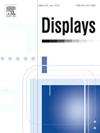EDRNet: An attention-based model for multi-type tumor and polyp segmentation in medical imaging
IF 3.7
2区 工程技术
Q1 COMPUTER SCIENCE, HARDWARE & ARCHITECTURE
引用次数: 0
Abstract
In the pursuit of advancing medical image segmentation, this study introduces a novel neural network, Efficient Deep Residual Network (EDRNet). Our approach is designed to handle different types of tumors, encompassing MRI brain tumor segmentation, three breast tumor ultrasound segmentation tasks, and cholorectal polyp segmentation from the Kvasir dataset. EDRNet incorporates advanced architectural features such as Enhanced Residual Dilated Blocks and a Deep Residual Network (DRNet), alongside an EfficientNet-based encoder, optimizing the extraction and processing of image features. A key innovation in our model is the integration of Spatial Channel Fusion Attention, with the DRNet which combines global and local feature extractors using an attention feature fusion module. Our modified Attention Feature Fusion Module (AFFM) plays a crucial role in integrating local features (lc), fused features (fuse), and global features (gf) to produce a rich, multi-scale representation for improved segmentation performance at decoder part. Furthermore, we have used the transfer learning based approach to train single model for the multiple cancer datasets with combine loss functions to efficiently train the neural networks. Specifically, in the MRI and breast cancer datasets, EDRNet has demonstrated good capability in properly segmenting all types of brain tumors with precise details, whether located on the left or right side of the brain. This design choice significantly enhances the model’s ability to differentiate low and high level features and boundaries in medical images, crucial for accurate segmentation. Quantitative evaluations demonstrate that EDRNet sets new benchmarks on all considered datasets. Notably, improvements in Intersection over Union (IoU) were recorded as a 9 % increase for the MRI brain tumor segmentation, a substantial 4% enhancement for breast cancer segmentation datasets, and a 1.5% improvement in cholorectal polyp segmentation on the Kvasir dataset. These results underline the efficacy of EDRNet in boosting accuracy and sensitivity, confirming its state-of-the-art performance in medical image segmentation.
EDRNet:医学影像中基于注意力的多类型肿瘤和息肉分割模型
为了进一步推进医学图像分割,本研究引入了一种新的神经网络——高效深度残差网络(Efficient Deep Residual network, EDRNet)。我们的方法旨在处理不同类型的肿瘤,包括MRI脑肿瘤分割,三个乳腺肿瘤超声分割任务,以及来自Kvasir数据集的结肠直肠息肉分割。EDRNet结合了先进的架构特征,如增强残余膨胀块和深度残余网络(DRNet),以及基于effentnet的编码器,优化了图像特征的提取和处理。该模型的一个关键创新是将空间信道融合注意力与DRNet集成,DRNet使用注意力特征融合模块结合了全局和局部特征提取器。我们改进的注意力特征融合模块(AFFM)在整合局部特征(lc)、融合特征(fuse)和全局特征(gf)方面起着至关重要的作用,以产生丰富的多尺度表示,以提高解码器部分的分割性能。此外,我们使用基于迁移学习的方法对多个癌症数据集进行单模型训练,并结合损失函数有效地训练神经网络。具体而言,在MRI和乳腺癌数据集中,EDRNet显示出良好的能力,可以正确分割所有类型的脑肿瘤,并提供精确的细节,无论是位于大脑的左侧还是右侧。这种设计选择显著增强了模型区分医学图像中低水平和高水平特征和边界的能力,这对准确分割至关重要。定量评估表明,EDRNet为所有考虑的数据集设定了新的基准。值得注意的是,交叉交叉(IoU)的改进记录为MRI脑肿瘤分割提高了9%,乳腺癌分割数据集提高了4%,Kvasir数据集上的结肠直肠息肉分割提高了1.5%。这些结果强调了EDRNet在提高准确性和灵敏度方面的功效,证实了其在医学图像分割方面的最先进性能。
本文章由计算机程序翻译,如有差异,请以英文原文为准。
求助全文
约1分钟内获得全文
求助全文
来源期刊

Displays
工程技术-工程:电子与电气
CiteScore
4.60
自引率
25.60%
发文量
138
审稿时长
92 days
期刊介绍:
Displays is the international journal covering the research and development of display technology, its effective presentation and perception of information, and applications and systems including display-human interface.
Technical papers on practical developments in Displays technology provide an effective channel to promote greater understanding and cross-fertilization across the diverse disciplines of the Displays community. Original research papers solving ergonomics issues at the display-human interface advance effective presentation of information. Tutorial papers covering fundamentals intended for display technologies and human factor engineers new to the field will also occasionally featured.
 求助内容:
求助内容: 应助结果提醒方式:
应助结果提醒方式:


